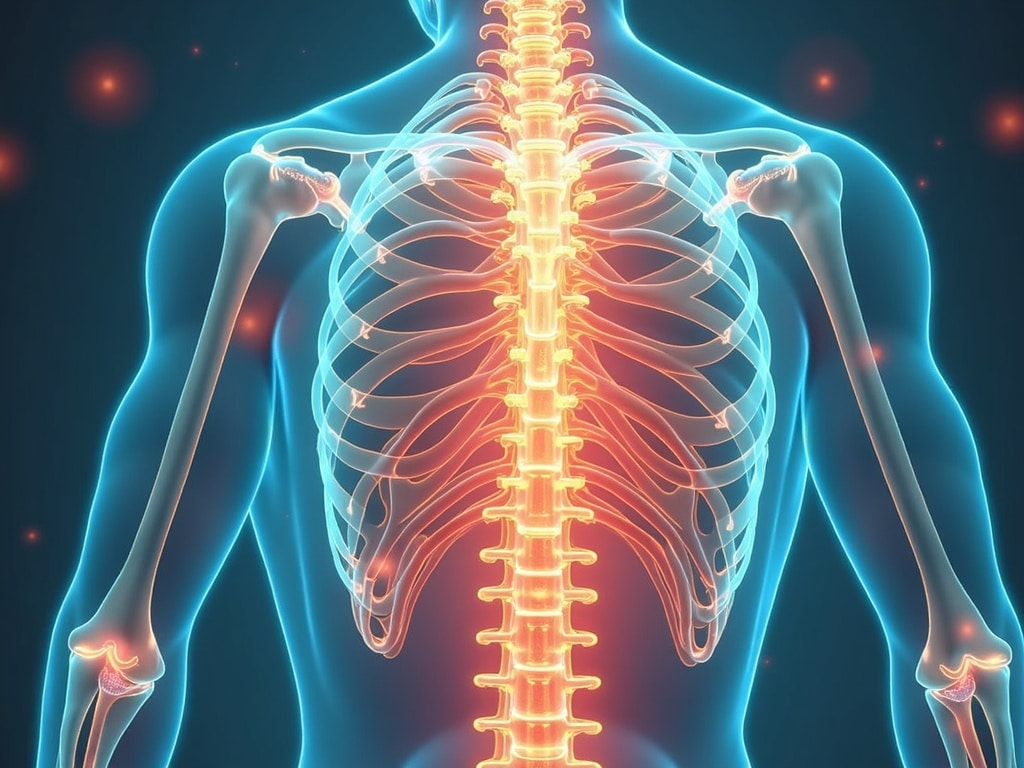Stop Arthritis Pain: The Ultimate Guide for Active Seniors
Arthritis, a common companion for many as they journey through their golden years, doesn’t have to dictate the terms of your life. Imagine waking up each morning not with a groan of pain, but with a sense of possibility. Envision yourself tending your garden, playing with your grandchildren, or simply taking a leisurely stroll without the nagging ache that arthritis often brings. This isn’t just a dream; it’s an attainable reality with the right knowledge and strategies. This guide is designed to empower you, active seniors, to take control of your arthritis pain and reclaim the joy of living.
Understanding Arthritis: Unraveling the Mystery of Joint Pain
Arthritis isn’t a single disease, but an umbrella term encompassing over 100 different conditions that affect the joints. Understanding what type of arthritis you have is the first step in effectively managing your pain.
What is Arthritis and Its Different Types?
At its core, arthritis involves inflammation of one or more joints. This inflammation can cause pain, stiffness, swelling, and decreased range of motion. The two most common types are:
- Osteoarthritis (OA): Often referred to as wear-and-tear arthritis, OA occurs when the protective cartilage that cushions the ends of your bones gradually breaks down. This is incredibly common, especially as we age.
- Rheumatoid Arthritis (RA): RA is an autoimmune disease where the body’s immune system mistakenly attacks the lining of the joints (the synovium). This can lead to chronic inflammation and joint damage.
Other types include gout, psoriatic arthritis, and lupus.
What are the Common Causes of Arthritis?
The causes of arthritis vary depending on the type:
- Osteoarthritis: Aging, joint injury, repetitive motions, obesity, and genetics can all contribute.
- Rheumatoid Arthritis: The exact cause is unknown, but it’s believed to be a combination of genetic predisposition and environmental factors.
- Gout: Caused by a buildup of uric acid crystals in the joints.
What are the Primary Symptoms of Different Types of Arthritis?
While symptoms can overlap, here are some key differences:
- Osteoarthritis: Pain that worsens with activity and improves with rest, stiffness (especially in the morning or after inactivity), clicking or grinding sensations in the joint.
- Rheumatoid Arthritis: Symmetrical joint pain and swelling (affecting the same joints on both sides of the body), fatigue, fever, and morning stiffness lasting for hours.
Diagnosing Arthritis: Getting to the Root of the Problem
Accurate diagnosis is crucial for effective treatment. Ignoring persistent joint pain can lead to further damage and decreased quality of life.
How is Arthritis Diagnosed?
Diagnosis typically involves a combination of:
- Physical Exam: Your doctor will examine your joints for swelling, redness, warmth, and range of motion.
- Medical History: Discussing your symptoms, family history, and any other relevant medical information.
What Tests are Involved in Diagnosing Arthritis?
Common tests include:
- Blood Tests: Can help identify specific types of arthritis, such as rheumatoid arthritis (through rheumatoid factor and anti-CCP antibody tests) or gout (through uric acid levels).
- X-rays: Can reveal joint damage, bone spurs, and cartilage loss.
- MRI: Provides more detailed images of soft tissues and can help detect early signs of arthritis.
- Joint Fluid Analysis: Involves removing fluid from the affected joint to check for infection, crystals (as in gout), or inflammation.
What Specialists Can Help Diagnose and Manage Arthritis?
- Primary Care Physician: Often the first point of contact for evaluating joint pain.
- Rheumatologist: A specialist in arthritis and other autoimmune diseases.
- Orthopedic Surgeon: May be consulted if surgery is needed.
- Physical Therapist: Can help develop exercise programs to improve strength, flexibility, and range of motion.
Medical Treatments for Arthritis Pain: Exploring Your Options
A variety of medical treatments are available to manage arthritis pain and slow the progression of the disease.
What Medications are Available for Managing Arthritis Pain?
- Pain Relievers: Over-the-counter medications like acetaminophen (Tylenol) or NSAIDs (nonsteroidal anti-inflammatory drugs) such as ibuprofen (Advil, Motrin) and naproxen (Aleve) can help relieve mild to moderate pain.
- Prescription NSAIDs: Stronger NSAIDs are available by prescription.
- DMARDs (Disease-Modifying Antirheumatic Drugs): Used for rheumatoid arthritis to slow the progression of the disease. Examples include methotrexate and sulfasalazine.
- Biologics: A newer class of DMARDs that target specific parts of the immune system.
- Corticosteroids: Can be taken orally or injected into the joint to reduce inflammation and pain.
What are the Benefits and Risks of Different Medications?
Each medication has its own set of benefits and risks. It’s crucial to discuss these with your doctor to determine the best treatment plan for you.
- NSAIDs: Can cause stomach ulcers, heart problems, and kidney problems.
- DMARDs and Biologics: Can suppress the immune system, increasing the risk of infection.
- Corticosteroids: Can cause weight gain, mood changes, and increased blood sugar levels.
What are Alternative Medical Treatments (e.g., Injections, Physical Therapy)?
- Cortisone Injections: Can provide temporary pain relief by reducing inflammation in the joint.
- Hyaluronic Acid Injections: Can lubricate the joint and reduce pain.
- Physical Therapy: Can help improve strength, flexibility, and range of motion.
- Occupational Therapy: Can help adapt daily tasks to reduce stress on the joints.
Lifestyle Changes for Pain Management: Empowering Yourself Through Daily Choices
While medical treatments are important, lifestyle changes play a vital role in managing arthritis pain and improving your overall well-being. They allow you to actively participate in your care.
What Role Does Diet Play in Managing Arthritis Pain?
Certain foods can help reduce inflammation and pain, while others can worsen symptoms. Consider these dietary adjustments:
- Anti-inflammatory Diet: Focus on fruits, vegetables, whole grains, lean protein, and healthy fats.
- Omega-3 Fatty Acids: Found in fatty fish (salmon, tuna, mackerel), flaxseeds, and walnuts, these can help reduce inflammation.
- Avoid Processed Foods: Limit processed foods, sugary drinks, and excessive amounts of red meat, as they can promote inflammation.
- Consider a Mediterranean Diet: This diet is rich in anti-inflammatory foods and has been shown to benefit people with arthritis.
What Exercises are Beneficial for People with Arthritis?
Exercise is crucial for maintaining joint mobility, strength, and overall health. Choose low-impact activities that are gentle on your joints.
- Walking: A simple and accessible exercise that can improve cardiovascular health and reduce joint stiffness.
- Swimming: Water supports your weight, making it an excellent option for people with arthritis.
- Cycling: Another low-impact exercise that can strengthen your leg muscles.
- Yoga and Tai Chi: These practices can improve flexibility, balance, and relaxation.
How Can Weight Management Help Reduce Arthritis Pain?
Excess weight puts extra stress on your joints, especially your knees and hips. Losing even a small amount of weight can significantly reduce pain and improve function.
Home Remedies and Natural Therapies: Exploring Gentle Relief
Many home remedies and natural therapies can complement medical treatments and provide additional pain relief. However, it’s crucial to consult with your doctor before trying any new therapies, especially if you have other medical conditions or are taking medications.

What are Effective Home Remedies for Arthritis Pain Relief?
- Heat and Cold Therapy: Applying heat can relax muscles and relieve stiffness, while cold can reduce inflammation and pain. Experiment to see what works best for you.
- Topical Creams and Gels: Over-the-counter creams containing capsaicin (derived from chili peppers) or menthol can provide temporary pain relief.
- Epsom Salt Baths: Soaking in a warm bath with Epsom salts can help relax muscles and reduce inflammation.
What Natural Supplements and Herbs Can Help?
- Turmeric: Contains curcumin, a potent anti-inflammatory compound.
- Ginger: Has anti-inflammatory properties and can help reduce pain and stiffness.
- Glucosamine and Chondroitin: May help rebuild cartilage and reduce pain in some people with osteoarthritis.
- SAMe (S-adenosylmethionine): May help reduce pain and improve joint function.
Are There Any Risks Associated with Using Home Remedies?
While generally safe, some home remedies and natural therapies can have side effects or interact with medications. Always talk to your doctor before trying something new.
Assistive Devices and Adaptive Strategies: Making Life Easier
Assistive devices and adaptive strategies can help you maintain independence and perform daily tasks with less pain and effort.
What Assistive Devices Can Aid Mobility and Daily Tasks?
- Canes and Walkers: Can provide support and stability, reducing stress on your joints.
- Jar Openers and Reachers: Can help with tasks that require gripping or reaching.
- Adaptive Utensils: Feature large, easy-to-grip handles.
- Raised Toilet Seats and Grab Bars: Can make it easier to use the bathroom.
How Can Seniors Adapt Their Homes to Make Them More Arthritis-Friendly?
- Remove Throw Rugs: To prevent falls.
- Install Grab Bars in the Bathroom: For added safety.
- Rearrange Kitchen Cabinets: To bring frequently used items within easy reach.
- Use Ergonomic Tools and Equipment: In the kitchen and garden.
Where Can Seniors Find Resources for Assistive Devices?
- Medical Supply Stores: Carry a wide range of assistive devices.
- Occupational Therapists: Can recommend specific devices and provide training on how to use them.
- Online Retailers: Offer a convenient way to shop for assistive devices.
Mental and Emotional Well-being: Nurturing Your Inner Strength
Living with chronic pain can take a toll on your mental and emotional well-being. It’s important to address these challenges and develop healthy coping strategies.
How Does Arthritis Affect Mental Health?
Arthritis can lead to:
- Depression: Chronic pain and limited mobility can contribute to feelings of sadness, hopelessness, and loss of interest in activities.
- Anxiety: Worrying about pain, disability, and the future can trigger anxiety.
- Social Isolation: Difficulty participating in social activities can lead to feelings of isolation and loneliness.
What Coping Strategies Can Help Manage the Emotional Challenges of Arthritis?
- Stay Active: Regular exercise can improve mood and reduce stress.
- Practice Relaxation Techniques: Such as meditation, deep breathing, or yoga.
- Maintain Social Connections: Spend time with friends and family.
- Seek Professional Help: If you’re struggling with depression or anxiety, consider talking to a therapist or counselor.
What Support Groups and Resources are Available?
- The Arthritis Foundation: Offers support groups, educational programs, and online resources.
- Local Senior Centers: May offer support groups and activities for people with arthritis.
- Online Forums and Communities: Provide a space to connect with others who understand what you’re going through.
Staying Active with Arthritis: Embracing Movement and Vitality
Arthritis may present challenges, but it doesn’t mean you have to give up on an active lifestyle. The key is to modify your approach and listen to your body.
How Can Seniors Stay Active Despite Arthritis Pain?
- Choose Low-Impact Activities: As mentioned earlier, walking, swimming, and cycling are excellent options.
- Modify Activities: Break down tasks into smaller steps and take frequent breaks.
- Listen to Your Body: Rest when you need to and don’t push yourself too hard.
What are Safe and Effective Exercise Routines?
- Range-of-Motion Exercises: Help maintain joint flexibility.
- Strengthening Exercises: Build muscle strength to support your joints.
- Aerobic Exercises: Improve cardiovascular health and endurance.
- Consult with a Physical Therapist: To develop a personalized exercise program.
How to Avoid Injury While Exercising with Arthritis.
- Warm Up Before Exercising: Gentle stretching can prepare your muscles and joints.
- Use Proper Form: To avoid putting unnecessary stress on your joints.
- Cool Down After Exercising: To prevent muscle soreness.
- Listen to Your Body: Stop if you experience pain.
Planning for the Future: Long-Term Strategies for Well-being
Managing arthritis is a long-term journey that requires ongoing planning and adaptation. Developing a proactive plan can help you maintain your quality of life and independence.
What are Long-Term Management Strategies for Arthritis?
- Regular Checkups with Your Doctor: To monitor your condition and adjust your treatment plan as needed.
- Medication Management: Taking medications as prescribed and reporting any side effects to your doctor.
- Lifestyle Modifications: Continuing to practice healthy eating habits, exercise regularly, and manage your weight.
- Pain Management Techniques: Learning and practicing various pain management techniques, such as relaxation exercises, heat and cold therapy, and topical creams.
When Should Seniors Consider Surgery or Other Advanced Treatments?
Surgery may be an option if other treatments have failed to provide adequate pain relief and improve function. Joint replacement surgery is a common procedure for people with severe arthritis.
How to Create a Pain Management Plan with Healthcare Professionals.
Collaborate with your doctor, physical therapist, and other healthcare professionals to develop a comprehensive pain management plan that addresses your specific needs and goals. This plan should include:
- Medications: A list of all medications you’re taking, including dosages and potential side effects.
- Exercise Program: A personalized exercise program tailored to your abilities and limitations.
- Pain Management Techniques: A list of pain management techniques that you find helpful.
- Goals: Specific, measurable, achievable, relevant, and time-bound goals for managing your pain and improving your quality of life.
Expert Advice and Resources: Empowering Yourself with Knowledge
Staying informed and connected is crucial for managing arthritis effectively. Here’s how to find reliable information and connect with others who understand what you’re going through.
Where Can Seniors Find Reliable Information About Arthritis?
- The Arthritis Foundation (www.arthritis.org): A trusted source of information about arthritis, including symptoms, causes, treatments, and lifestyle management.
- The National Institute of Arthritis and Musculoskeletal and Skin Diseases (NIAMS): Provides information about arthritis research and treatment.
- Your Doctor or Healthcare Provider: Can provide personalized information and advice based on your individual needs.
What Questions Should Seniors Ask Their Doctors About Arthritis?
- What type of arthritis do I have?
- What are my treatment options?
- What are the potential side effects of the medications you’re prescribing?
- What lifestyle changes can I make to manage my pain?
- What are the long-term management strategies for my condition?
How to Connect with Arthritis Support Communities.
- Attend local support groups: The Arthritis Foundation and local senior centers often offer support groups for people with arthritis.
- Join online forums and communities: Connect with others who have arthritis online and share experiences, tips, and support.
- Participate in arthritis events and activities: Attend workshops, conferences, and fundraising events to learn more about arthritis and connect with others.

